- Home
- Patrick Robinson
The Delta Solution Page 23
The Delta Solution Read online
Page 23
Meanwhile Mohammed Salat’s chief of staff had downloaded the communiqué from Peter Kilimo. It was getting light and he knew the chairman was asleep, so he left it on the desk in the private office.
It was thus almost ten o’clock in the morning before Mr. Salat read it. And when he did, he felt the victorious surge of a conqueror. The mighty cargo must certainly be worth the thick end of $10 million.
Life had rarely, if ever, looked better. He picked up the telephone and called Ismael Wolde, who was sitting across the street under a banana tree, sipping fruit juice and cleaning his AK-47, the way modern-day pirates do.
Five minutes later he was in the garrison office sitting next to Mohammed Salat, reading the unsigned message from New York and pulling up Internet pictures of the world’s biggest LNG tankers, including the Global Mustang.
When the four-domed giant popped out of the ether, Ismael whistled through his teeth as he scanned the picture for the best place to board the vessel. Again, he suggested it must be the stern, but it would not be easy, and he considered it too dangerous to persuade the captain to slow down with an RPG7.
“Mr. Salat!” he said. “If we accidentally put one of those Russian rocket grenades through one of those domes, she’d go up like an atom bomb. Wouldn’t be no survivors inside a five-mile radius. Sir, I’ll do what’s possible, but I don’t want to get fried by no Arab gas bomb.”
“No, I don’t want that to happen. And I think we agree we cannot attack this giant from the water. Our only chance is to take her by stealth. We need to board her in complete secrecy. And then plant four bombs at the base of each one of those holding tanks. We then capture the crew and tell them what we’ve done, mined their ship from the inside.”
“Okay, and what’s our threat?”
“Ten million dollars, cash, delivered on deck; otherwise we’ll blow the Global Mustang to high heaven.”
“And where will we be at the time of this disaster?”
“In the Mombassa, five miles off.”
“And the crew of the tanker?”
“We’ll have to escort them off. There’ll be about thirty of them in two lifeboats. We don’t leave until the deadline is approaching. Then we all leave and wait for the drop.”
“And how do we get the cash?”
“We keep the crew at gunpoint. Then we have four of our guys go in, collect the cash, and disarm the bombs. At that point the crew can go back and continue their journey.”
Wolde should have been smiling. But instead he was frowning, still staring at the close-up shots of the LNG tanker. “The issue is,” he said, “can we get on board? Because this ship, according to these photographs, rides higher in the water than a regular crude-oil tanker.”
“She does in these pictures, which were taken as she left Tokyo Bay. We should assume she was empty. Loaded, she’s got to be a lot lower, carrying thousands of tons of liquid.”
“I think so,” said Admiral Wolde. “The good news is that rail that seems to run right around the deck. If the grapplers go high enough, they’ll grip anywhere.”
“The rail’s lowest at the stern,” said Salat. “Drops down at least twelve feet to a kind of transom—that undercover area, like a quarterdeck, under the helicopter landing area.”
“How high do you think that is, under a full load?”
“I’d say about thirty to thirty-five feet. No more.
“Then we can get the hooks on. Because we don’t need accuracy. Just height. To get ’em up and over that rail.”
“Are you concerned about her speed?”
“Sure I am. A ship that size moving through the water at 20 knots is a very difficult target. But I doubt there’ll be guards. And we got good drivers; they’ll put us right on the hull moving at zero relative speed. We’ll use knotted ropes and then rope ladders. And it’s a night attack. But if the water’s rough, we cannot do it.”
“I accept that,” said Salat. “And I also accept that we cannot open fire on this ship. Because if we hit and punctured one of those tanks, she would blow up.”
“Sir, I’ve never heard of anyone trying to capture an LNG vessel—I suppose for those very reasons. She’s too dangerous to hit, and too big and too fast to board, except for very skilled men. Like ours.”
Mohammed Salat was pulling up information on the Internet, and he said suddenly, “You know something, Ismael? These things have sailed 100 million miles around the world without a shipboard death or a major accident of any kind. Says it right here.”
“We’ll be the first, ha?” laughed Admiral Wolde. “We make naval history. Remember us in many books. Maybe get Somali Marines on television worldwide. Frighten our enemies!”
“I’m not sure about any of that,” said Salat, thoughtfully. “It’s much better if we stay very private.”
“If we hit the Global Mustang, we will be very public,” replied Ismael. “And very rich I think.”
“That’s the part I like most,” said the chairman.
WITH EIGHTEEN DAYS LEFT from deployment, Commander Bedford gathered his platoon to prepare them for the critical part of the forthcoming missions: the SEALs’ arrival at the mission headquarters, which would be some kind of a warship, out in the Indian Ocean.
“However we decide to attack these maniacs,” he said, “we’re almost certainly going to start off on a destroyer or even a carrier. Every scenario involves launching from one of our own ships.
“If the pirates are in command, we have to come in by air or by sea, maybe in helicopters, probably in little boats. But whatever it is, we kick off from a navy vessel.
“The most likely event is a signal to our Djibouti base instructing us to head out to an area where a US merchant ship has been captured. They’ll need to fly us to the warship immediately, possibly in a helicopter, but more likely in a fast, fixed-wing aircraft.
“As you all know, our Djibouti posting cuts hundreds of miles off our journey. But speed is everything. And to get on the goddamned ship we’ll probably have to drop in by parachute.”
“Is that into the water, sir?”
“You got it, kid. And because we’ll have a lot of equipment with us, probably a HAHO jump—high altitude, high opening. That way we got a good chance of staying together in the stack. Low man, that’ll be me, guides us in with the compass. Warship personnel will be in the Zodiacs waiting to hook us out as we drop in.”
“We going out around 10,000 feet, sir?”
“Well, that might have been the case. But the new information we have about the pirate weapons suggests they have heavier guns than we first thought. All Russian and capable of antiaircraft action, so we’ll probably fly in at 25,000 feet, and that’s where we’ll jump.”
“Any chance of an aircraft carrier, sir?”
“If there’s one anywhere near the pirates, we’ll use it, maybe even fly directly in and launch from her flight deck. But we can’t count on that. Because in the Indian Ocean we have many more destroyers and that’ll be our way in.”
Mack Bedford told them to have lunch and then report back for the ride out to the North Island Naval Air Base, where they would begin practice for the parachute jumps. “Matter of fact, guys, we’ll be there probably’til midnight,” he said. “The mission will definitely involve a night jump, so we might as well start off the way we’re gonna finish. The whole course will be in our frog-suits.”
“How long are we out there, sir? A week?”
“Minimum. Most of you have not jumped much since Fort Benning, where we all trained second week. Everyone’s a trained parachutist, but you need to get used to this stuff. Diving out of an aircraft at that height needs to be like second nature to us. Straight out, straight down, and straight into the ocean. No sweat. But we gotta be experts. That’s the way to stay alive.”
“I’m in favor of that,” someone shouted.
“Have a good lunch,” snapped Mack. “Right here 1430 hours.”
When they returned, everything was ready, including the
Lockheed C-130 Hercules, engines running moments from takeoff, pilots and navigator already in place. The SEALs disembarked their three trucks at the end of the runway and filed into the aircraft led by Lieutenant Josh Malone and his swim buddy Brad Charlton.
Each man would make his first ocean jump under full pack and rifle, but they wore special SEAL hooded frog-suits with flippers clipped on to their thighs. Mack Bedford was last man in, and the moment he was seated, the doors were closed and the aircraft rumbled forward, down the west-running runway, and climbed into the blue skies above Southern California.
At the Fort Benning Jump School in Georgia, they had concentrated on technique and familiarizing themselves with standard procedures. This new course of intensive training was geared strictly for the Pacific Ocean and the SEAL techniques of landing in the water.
The aircraft headed out over the vast military cemetery on the Point Loma peninsula, gaining altitude as it cleared the headland and roared out over the Pacific. Up ahead the pilot could see the US warship making a racetrack pattern in the water, tracked by four Zodiac inflatables, which he could just make out against the deep-blue of the afternoon water.
The SEALs began to file up toward the exit, gripping the static line as the dispatcher opened the aircraft door on the port side. Everyone felt the aircraft throttle back, and the dispatcher called out: “Approaching the drop zone. Action stations!”
Assembled in the area right in front of the opening, the SEAL team could no longer hear themselves think in the rush of the wind through the door. The aircraft was still making 150 knots, and once more Delta Platoon checked their static lines.
“Stand in the door, number one!”
The dispatcher was yelling at the top of his lungs to make himself heard. And Commander Mack Bedford stepped into the doorway watching for the light to glow above his head, the signal that the mission was a go.
“RED ON!”
Mack knew they were over the drop zone and he braced himself, sensing the guys moving forward behind him.
“GREEN ON! GO! GO! GO!”
The dispatcher slapped him on the shoulder, and Mack Bedford plunged out of the aircraft. He swept clear in the slipstream, and then dropped fast, sideways. He clamped his knees together, and he could feel the sensation of rolling backward. And he found himself staring up, watching for the canopy to billow out.
Somewhere above him was Barney Wilkes, followed by Cody Sharp and then Shane Cannel. But he couldn’t see them, and his parachute suddenly billowed, which prevented him seeing anything.
By this time, all fifteen chutes in the opening stack were blooming white against the azure, cloudless sky. And the ocean from 1,000 feet looked markedly less like a soft, blue carpet. Mack could see the white caps rolling on the surface, meaning there was a good bit of wind.
At 150 feet he could see the four inflatables circling right below him, and he could see the little boats rolling around as they waited for their airborne cargo to land. He pulled the harness forward under his backside, banged the release button on his chest, and freed the straps to fall away beneath his feet. Mack was just hanging there now, gripping the lift-webs above his head, the water rushing up to meet him.
He was hurtling toward the ocean, and he thrust his legs downward until he was standing upright. Ten feet above the surface, he let go and crashed straight into the Pacific, submerging at least ten feet. He kicked hard and the flippers drove him to the surface, no longer encumbered by the parachute.
He glanced up just in time to see Barney and Shane plummet into the water, not fifteen yards away, but before he could get his bearings, he felt two pairs of hands grabbing him and hauling him up over the gunwales into the rigid-deck inflatable. He noticed Barney was breathing normally but Shane was coughing and spluttering all over the place.
“Guess you better get right back up there and do it again,” said Mack. “I don’t want a lot of this spitting and farting when I’m about to blow the brains out of the Somali pirates. Christ, man, get a grip, will you?”
In fact Mack was laughing. But Shane was embarrassed. They had all been shown how to clamp up and hold their breath just before they hit the water. And Shane could hardly blame the temperature of the ocean for having opened his mouth on impact, because the frog-suit protected all of them from the remotest sensation of cold, except on the hands and face. He’d just screwed up, that was all. And far from feeling admonished by his CO, he wanted to get back up there and do it right.
“Just imagine what it would be like if we all did that after a ducking. There’d be chaos,” said Mack. “We gotta conquer it, get the breathing right. Don’t worry, kid, we’re all going to do it again. Just as soon as the first stack gets aboard. There’s a helo on the ship to fly us back to North Island. The Hercules will be down before we get there.”
Trained to have the strength and reactions of mountain lions, as fit as Olympic athletes, Delta Platoon entered the final days of their program. They’d mastered the techniques of boarding a moving ship, and they’d hauled in and out of navy helicopters until they knew more about them than the pilots. And they could hurl a grappling hook over a moonbeam and heave it tight.
Every attack strategy in the vast playbook of the US Navy SEALs was like the Twenty-third Psalm to them. They knew the stuff backward and forward. In a matter of days they would leave for the Horn of Africa, taking off in deadly secret at 0100 hours from the North Island base.
The only technique left to polish was the ocean drop. And they would dive out of the Hercules sixteen more times each before Commander Bedford was perfectly satisfied that he could send two stacks of SEALs directly into the Indian Ocean from 25,000 feet with a minimum of fuss and zero possibility of a screwup.
Under his command, the SEALs could mount a death-defying, worldchanging assault on the pirates.
In the favorite words of these princes among elite combat troops: God bless America, and God help the enemy.
BACK IN HARADHEERE, a signal was in from the new pirates confirming that they were in possession of the Japanese factory ship Ocean Dart. The crew had surrendered, offering no resistance to the Somali attack.
But Mohammed Salat had decided not to trust them with the critical information they needed to contact the president of the Kyushu Ocean Fishing Corporation, and now the latest assault group commander wanted further instructions.
Salat ordered them to stand by and keep the crew at gunpoint while he telephoned Mr. Nobataka Orita at his home in Kagoshima at the southernmost tip of the Japanese islands. It was 4:00 p.m. in Somalia and 10:00 p.m. in Japan, but Mohammed had Orita’s cell phone number.
This was the third time Mohammed Salat had used the number, and it would be the third time he had asked the south island fishing boss for a huge sum of money. The previous two were for $250,000, which had been paid immediately. This time Salat decided that a pay raise was in order, and he asked for $500,000 or else he would order his men to scuttle the ship and send the cargo and the crew to the bottom of the Indian Ocean.
Orita was furious. This African tribesman was holding his corporation for ransom once a month. If he paid this time it would mean he had given away one million dollars to the international gangster.
He longed to tell Salat to get lost, to go and do his worst. But that huge catch, deep-freeze refrigerated, was ready for market as soon as it landed in Japan. And it was worth $10 million. Wearily he asked the pirate king how he wanted the money and was told to make a beach drop on the ocean sands of Somalia.
Orita was becoming good at this. He had all of his African accounts at the Dashen Bank in downtown Addis Ababa, right down the street from De Gaulle Square. The Dashen president understood the Somali pirate menace and did all he could to facilitate the payment of ransoms.
For customers like Nobataka Orita, he even arranged transport, lending the corporate jet to fly over the beach and drop the money on to the sand. He charged fees for this service but nothing exorbitant, which was probably why his bank was
one of the most successful in Africa.
Salat handed over the GPS numbers to Orita and told him he had twenty-four hours or else. His men would be on the beach starting from 7:30 the following evening, and he had a two-and-a-half-hour window to make the drop. The customary two bonfires would be lit to guide the aircraft in.
Orita silently offered a polite bow, the traditional domo, in this case a double domo, of particular thanks and respect. The news was bad, but it could have been a lot worse. This son of a palsied dragon could have asked for $2 million.
Like many a big businessman with work in the Indian Ocean, Orita was very thankful for getting off so lightly, and the double domo for Salat was the least he could offer. For a handful of lotus blossoms he’d have thrown him a triple, right there in the empty room. But he decided that would have been overkill.
Salat terminated the call. And while Orita opened up the line to his Ethiopian banker, the pirate king called in Ismael Wolde to strategize the hit on the LNG tanker. Before them they had a large map of the Indian Ocean, and Ismael carefully marked with a cross the convergence of the 2.05N line of latitude with the sixty degree line of longitude, the spot where the Global Mustang would make her easterly turn at noon on Sunday.
“I suppose we must allow for the possibility that the tanker’s master might cut the corner,” said Wolde. “So it would probably be better if we waited for her somewhere south along her easterly course.”
“Right,” replied Salat. “When you have a big modern ship moving easily at 20 knots through the water, you don’t want the Mombassa trying to play catch-up. Hassan says she really shakes and shudders at that speed.”
“That’s true,” said Wolde. “She’s an old boat, even with her new engine. Our policy has to be like always, sir. Let’s get out in front of this target and then close in on her port quarter.”
“Okay. When do you want to leave?”
“We got seven hundred miles to cover. And we don’t want to run her at more than 15 knots. Hit the calculator, sir. How many hours?”

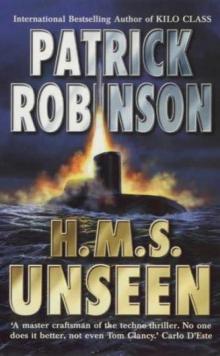 H.M.S. Unseen am-3
H.M.S. Unseen am-3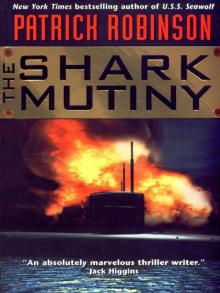 The Shark Mutiny (2001)
The Shark Mutiny (2001)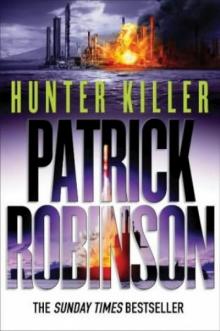 Hunter Killer am-8
Hunter Killer am-8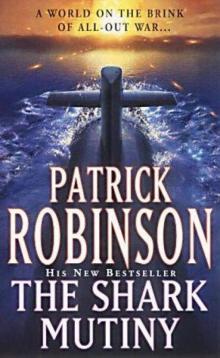 The Shark Mutiny am-5
The Shark Mutiny am-5 Scimitar SL-2
Scimitar SL-2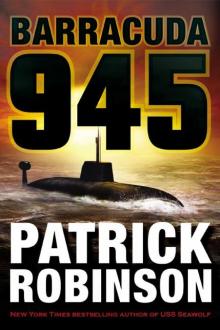 Barracuda 945 am-6
Barracuda 945 am-6 Hunter Killer
Hunter Killer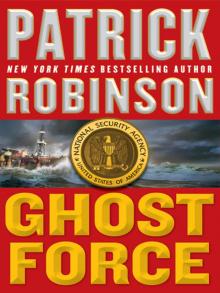 Ghost Force
Ghost Force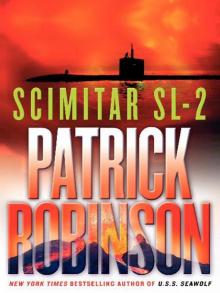 Scimitar SL-2 (2004)
Scimitar SL-2 (2004) Kilo Class am-2
Kilo Class am-2 The Lion of Sabray
The Lion of Sabray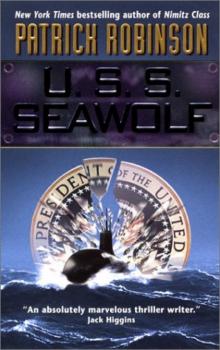 U.S.S. Seawolf am-4
U.S.S. Seawolf am-4 Ghost Force am-9
Ghost Force am-9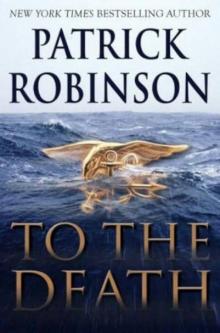 To the Death am-10
To the Death am-10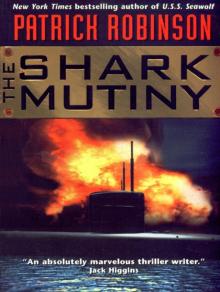 The Shark Mutiny
The Shark Mutiny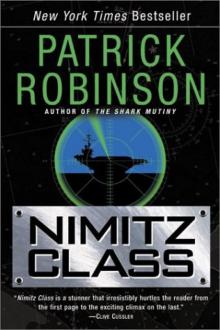 Nimitz Class am-1
Nimitz Class am-1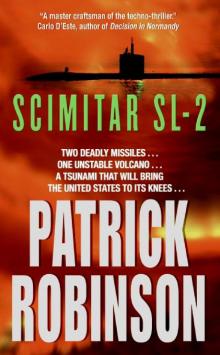 Scimitar SL-2 am-7
Scimitar SL-2 am-7 Barracuda 945
Barracuda 945 Intercept
Intercept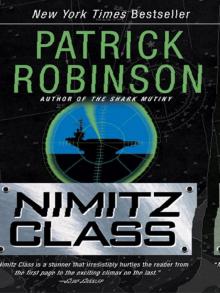 Nimitz Class (1997)
Nimitz Class (1997)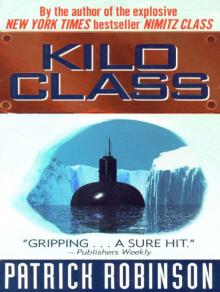 Kilo Class
Kilo Class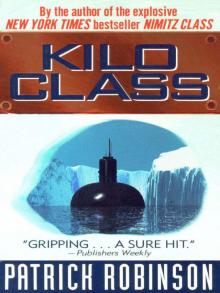 Kilo Class (1998)
Kilo Class (1998) Diamondhead
Diamondhead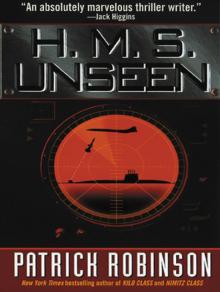 H.M.S. Unseen
H.M.S. Unseen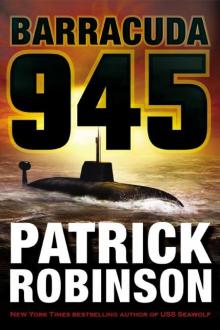 Barracuda 945 (2003)
Barracuda 945 (2003)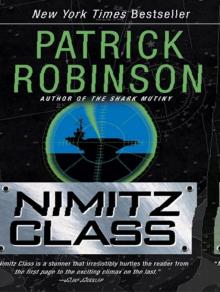 Nimitz Class
Nimitz Class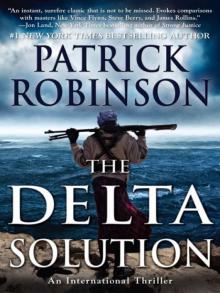 The Delta Solution
The Delta Solution U.S.S. Seawolf
U.S.S. Seawolf